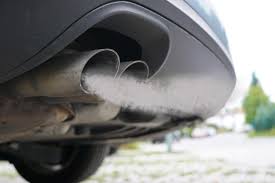3SGE VS 2ZZGE
- Get link
- X
- Other Apps
A 3SGE VS 2ZZGE
Introduction
Toyota has a long history of building performance-oriented four-cylinder engines, and two of its most celebrated examples are the 3S-GE and the 2ZZ-GE. Both are naturally aspirated DOHC 16-valve inline-fours, designed with an emphasis on high performance, but they come from different generations and design philosophies. The 3S-GE, produced from the mid-1980s to the early 2000s, is known for its robust build and motorsport heritage. The 2ZZ-GE, introduced in 1999, represents a newer era of lightweight, high-revving performance with advanced variable valve timing. Comparing these two highlights Toyota’s evolution in sports engine engineering.
Design and Specifications
The 3S-GE displaces 2.0 liters and uses a cast-iron block with an aluminum head, offering durability and a strong bottom end. Depending on the generation, power output ranged from around 135 hp in early versions to over 200 hp in the BEAMS (Breakthrough Engine with Advanced Mechanism System) variant. The 2ZZ-GE is a 1.8-liter all-aluminum engine co-developed with Yamaha. It features VVTL-i (Variable Valve Timing and Lift with intelligence) and produces between 180–190 hp, with a redline around 8,200 rpm. While the 3S-GE focuses on midrange strength, the 2ZZ-GE emphasizes high-revving performance.
Performance Characteristics
The 3S-GE delivers strong, linear torque across the rev range, making it versatile for both street driving and track use. Its iron block handles sustained high-load situations well, a trait appreciated in rallying and endurance racing. The 2ZZ-GE, in contrast, comes alive at high RPMs thanks to VVTL-i, which engages a second cam profile around 6,200 rpm, unleashing a surge of power. This “lift” effect gives the 2ZZ-GE a thrilling, motorcycle-like character but requires the driver to keep the revs high to extract maximum performance.
Reliability and Maintenance
Both engines are respected for reliability when maintained properly, but they have different needs. The 3S-GE’s heavier, stronger bottom end can withstand aggressive use and is more forgiving if maintenance is slightly neglected, though its age means most examples now require restoration or rebuilds. The 2ZZ-GE, being lighter and higher-revving, is more sensitive to oil quality and level, low oil can lead to catastrophic failures due to its tight tolerances. Owners of the 2ZZ-GE must be diligent with maintenance, especially if frequently exploiting its high RPM capability.
Conclusion
Ultimately, the choice between the 3S-GE and 2ZZ-GE depends on driving style and priorities. The 3S-GE offers a solid, torque-rich experience with a proven motorsport pedigree, appealing to those who value strength and flexibility. The 2ZZ-GE delivers a more modern, high-revving thrill for enthusiasts who enjoy chasing the redline and extracting maximum performance from a lightweight package. Both are iconic in their own right, representing different eras of Toyota’s performance engineering, one as a durable powerhouse, the other as a precision high-revving machine.
Check With Your Local Laws And Regulations Before Modifying, Swiping Motors, And Transmission..👈
Important Information Before Swapping A Motor And Transmission..👈
The Importance Of Transmission Builds..👈
How To Build A Forged Engine..👈
The Negative Input Of Speeding Accidents and High Car Insurance👈
Top Modern Toyota NA 4 Cylinder Swaps👈
Weight Reduction Mods For A Toyota Corolla👈
How To Do An Engine And Transmission Swap In A Toyota Corolla👈
Do Homework On Your Engine And Transmission Swap👈
Turbocharged i4 Toyota Corolla Engine Swaps👈
Super i4 Toyota Corolla Engine Swaps👈
JZ Series Toyota Corolla Engine Swaps👈
High Performance V6 Toyota Corolla Engine Swaps👈
High Performance V8 Toyota Corolla Engine Swaps👈
High Performance Honda Toyota Corolla Engine Swaps👈
High Performance Nissan Toyota Corolla Engine Swaps👈
Toyota Corolla Tercel Coupe Build👈
Keep Your Toyota Corolla Clean👈
- Get link
- X
- Other Apps




Comments
Post a Comment